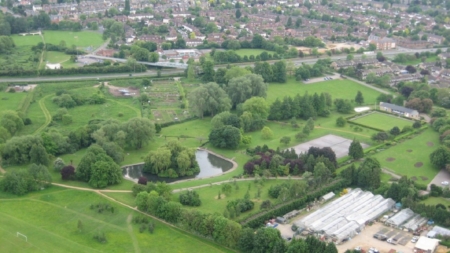How do we scale up nature-based solutions in the UK?Case study
Working with its partners and stakeholders, this project is assessing the potential for nature-based solutions to contribute to national climate, biodiversity and economic targets, understand the social and practical obstacles to NbS, and strengthen tools and guidance for decision makers. Outputs are aimed at supporting key policy processes including net zero strategy, nature recovery, economic recovery, levelling up and climate change adaptation.
Protecting and restoring ecosystems, and managing farmland, forestry and fisheries more sustainably, can contribute to net zero targets, reduce vulnerability to climate change, reverse biodiversity decline and support economic recovery. Building resilient landscapes by scaling up NbS can also have a hugely positive impact on local communities, contributing to the “levelling up” agenda.
If NbS are to be implemented at scale, we need both a supportive national policy framework and the tools to enable local communities to deliver well-designed NbS in the right places across the landscape. Understanding how to design NbS to maximise benefits and manage trade-offs is key to the decision-making process and for getting the endorsement of local stakeholders.
Through a combination of scenario modelling, mapping, stakeholder engagement and fieldwork at diverse sites including Oxfordshire, the Scottish Highlands and mid-Wales, this Agile Sprint project is building a tool-kit and case study database that supports decision makers to plan and deliver high quality NbS in the UK. It is based out of the Nature-based Solutions Initiative.
Project outputs
Grace, M., Smith, A., Mell, I., Houghton, J., & Neal, P. (2025). A menu of standards for green infrastructure in England: effective and equitable or a race to the bottom?. Frontiers in Environmental Science.
Green infrastructure (GI) such as street trees, parks, green roofs and raingardens can play a vital role in keeping our towns and cities clean, cool, safe and healthy. However, GI needs to be carefully planned to make sure we have enough green space for people and nature to thrive. To help local authorities deliver high quality, multifunctional GI that meets local needs as well as national priorities, Natural England has been developing a framework of GI Principles and Standards in partnership with a broad range of researchers and practitioners.
Team
Programmes
Partners
News & events
-

Ensuring gold standards are followed for green spaces to help create healthier, more sustainable, and climate-resilient communities
20 February 2025A new paper published in Frontiers in Environmental Science describes a comprehensive menu of standards for green infrastructure in England to help deliver green space that is accessible, connected, multifunctional, and reflects local character. Here Alison Smith, a Senior Researcher with the Leverhulme Centre for Nature Recovery, who helped compile the standards, explains how following […]
news Blog -

Highlands Rewilding Unveils Roadmap for Inclusive Nature-Based Solutions
23 October 2023Author: Dr. Caitlin Hafferty Highlands Rewilding, a pioneering initiative seeking to tackle the climate and biodiversity crisis through accelerating nature-based solutions, has released a comprehensive “Engagement Roadmap”. This roadmap, developed in collaboration with researchers from the Leverhulme Centre for Nature Recovery and Agile Initiative, alongside Scotland’s Rural College (SRUC), presents a strategy for effective public […]
news News








